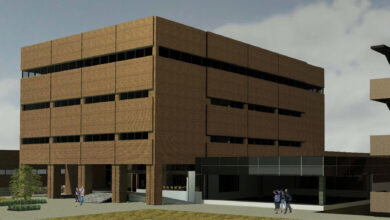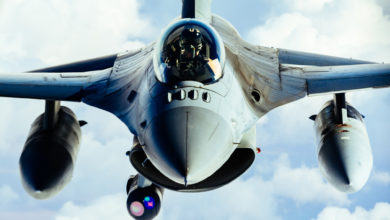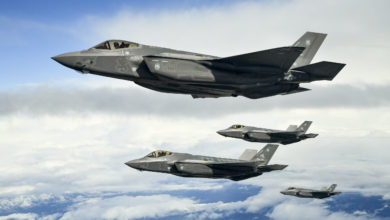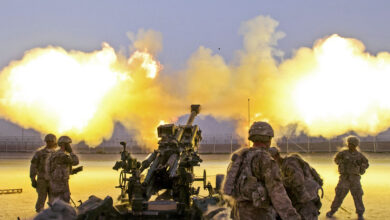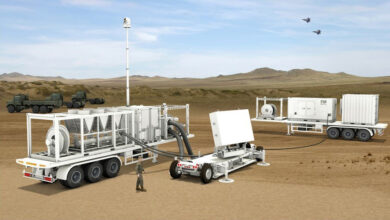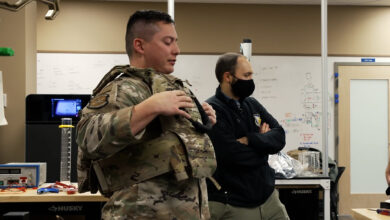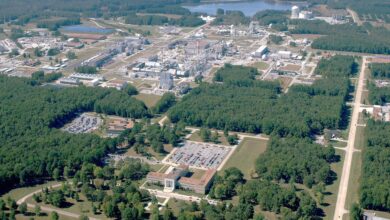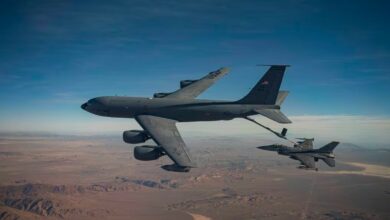USAF Invests in Alternative Energy, Updated Weapons Technologies
The US Air Force (USAF) is investing in technologies to make their systems more energy-efficient, a senior official from the Air Force for acquisition, technology, and logistics said during an Air Force Association webinar.
The Air Force Research Laboratory (AFRL), which is at the forefront of discovering, developing, and integrating aerospace warfighting technologies, has listed four key areas in the achievement of that goal.
These include advanced engine concepts, weight and power reduction, advanced or alternative fuels, and batteries.
Deputy assistant secretary for science, technology, and engineering in the Air Force for acquisition, technology, and logistics Kristen Baldwin stated, “What I see as our most pressing opportunity is to ensure promising technologies transition to the warfighter quickly.”
“I believe that we can and should do this by redesigning how we emphasize and reward programs that make lifecycle energy efficiency considerations a prerogative from the start.”
New Technology for Existing Systems
Apart from developing new technologies for new systems, Baldwin endorsed the need to retrofit existing systems with updated technologies to make them more energy-efficient.
She discussed specific projects under which AFRL, in collaboration with private players, is developing technologies for “affordable mission capability.”
“We have government and industry teams working together on advanced turbine-based propulsion power and thermal technologies for legacy as well as [those] in development and future military propulsion programs,” she said.
“…adaptive engines with variable turbines, high-pressure ratio compressors and ultra-compact combustors for long-range air superiority” are some other technologies and systems AFRL and its collaborators are working on to achieve reduced costs and increased fuel efficiency, Baldwin added.
Increased Casualties Due to Fuel Convoy
Pentagon has long been aware of the need to rid itself of its dependence on fossil fuel. In 2003, Lt. Gen. Jim Mattis, then-commander of the First Marine Expeditionary Force, said that future US military forces must “be unleashed from the tether of fuel.”
Interestingly, though, the immediate concern behind Mattis’ statement was the rising casualty figures of US forces in Iraq and Afghanistan while guarding fuel convoys in the war-torn regions.

The US Army attributed the deaths of over three thousand US military and Department of Defense (DoD) contractors between 2003 and 2007 in the two countries to the necessity of transporting and guarding fuel.
Switching to renewable sources of energy such as solar power not only reduces the risk of being attacked while guarding a fuel convoy but also allows soldiers to move more quietly through enemy territory, which is not possible in the case when employing the noisy diesel-fired generators required while transporting fuel.
Likewise, in the sea, energy-efficient gas-electric hybrid battleships allow for fewer stops – making them less vulnerable to terrorist attacks such as that which took place in Yemen in 2000 killing 17 US soldiers aboard the USS Cole, according to Reuters.
Pentagon Efforts to Increase Renewable Fuel Consumption
Along with long-term strategic concerns such as climate change and rising fossil fuel prices, such 21st-century tactical considerations may be behind the near doubling of US armed forces renewable power generation between 2011 and 2015, to 10,534 billion British thermal units, Reuters reported citing a DoD report.
Moreover, the report added, the number of military renewable energy projects nearly tripled to 1,390 during this period.
Research on New Materials, Batteries
Meanwhile, Baldwin said the USAF is looking at new materials that can provide significant structural weight savings and improve fuel efficiency while investing in “turboelectric and hybrid electric technologies.”
“We have ongoing research in targeting fundamental chemistry that can help enable improved fuel quality and military performance,” she said.
“We’re also exploiting combustion properties to increase system performance; we’re looking at hot fuel thermal management architectures; and we’re looking at fuel technologies and formulations that enable hypersonic flight.”
She also explained that the lab is investing in battery research to make light-weight batteries that provide more power with less frequent recharging.


